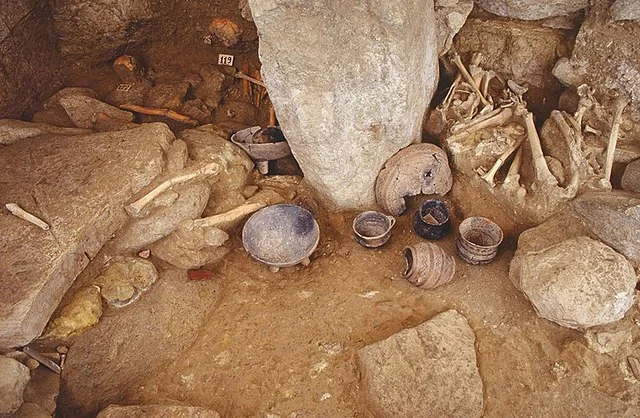The Tomb of Bingia ‘e Monti is a significant archaeological site located in Sardinia, Italy. The tomb belongs to the Nuragic civilization, which thrived on the island from around 1800 BC to 200 AD. This ancient structure provides important insights into the burial practices and religious beliefs of the Nuragic people.
Get your dose of History via Email
Structure and Layout
The Tomb of Bingia ‘e Monti is a Domus de Janas (House of the Fairies), a type of rock-cut tomb. These tombs were carved directly into the rock and were commonly used in Sardinia during the prehistoric era. The tomb has multiple chambers connected by narrow passages, indicating its use for multiple burials over time.
The architectural features of the tomb include carved doorways and stone benches, which were possibly used for rituals or as resting places for the deceased. The precision in the rock carvings shows the advanced skills of the Nuragic people.
Burial Practices
The Nuragic civilization used communal burial practices, as evidenced by the Tomb of Bingia ‘e Monti. Multiple individuals were buried in the tomb, with grave goods such as pottery, tools, and jewelry placed alongside the deceased. These items reflect the belief in an afterlife where the dead might need these objects.
The layout of the tomb suggests that the Nuragic people valued both family and community in death. The shared burial chambers highlight the close-knit structure of their society.
Archaeological Discoveries
Excavations at the Tomb of Bingia ‘e Monti have revealed a variety of artifacts, including ceramics, bronze objects, and beads. These findings help researchers better understand the material culture of the Nuragic civilization. Pottery styles, for instance, provide clues about trade relations and cultural exchanges with neighboring regions during this period.
The tomb’s discovery also contributes to the broader understanding of the Nuragic people’s burial customs and religious beliefs. Through these excavations, scholars can piece together how this civilization approached death and the afterlife.
Significance in Sardinian Prehistory
The Tomb of Bingia ‘e Monti is a key site for understanding the broader context of Sardinian prehistory. The Nuragic civilization played a central role in shaping the island’s culture and society. Tombs like Bingia ‘e Monti highlight the intricate burial practices and the connection between the living and the dead.
In conclusion, the Tomb of Bingia ‘e Monti provides invaluable insights into the social and religious practices of the Nuragic civilization. Its careful construction, communal use, and rich archaeological findings make it a vital part of Sardinia’s prehistoric heritage.
Source:

